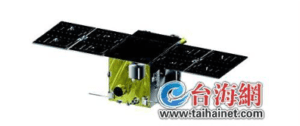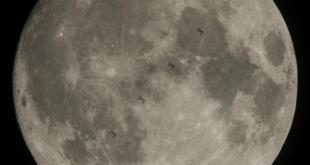by Blaine Curcio
China’s commercial space sector has rightly received significant attention over the past 6-7 years, as more than 100 commercial space companies have been established with big plans to do things as diverse as rocket manufacturing, satellite IoT services, or indeed, earth observation. With that being said, despite the incredible number of commercial space companies in China, the biggest projects are still almost invariably done by the state, in one of its many forms. The most apparent example is the various collaboration between the China National Space Administration (CNSA) and China Aerospace Science & Technology Corporation (CASC), with these two players administering and executing, respectively, many of China’s biggest space projects.

With that said, a lower-profile space industry behemoth in China is, and always has been, the Chinese Academy of Sciences (CAS). With an annual budget of around $15B, and more than 60,000 researchers, the CAS is one of the world’s leading scientific research institutions. Importantly, the CAS is also the source of many “spinoff companies”, which are usually comprised of teams of researchers trying to commercialize a specific technology that would otherwise be limited to the confines of academia. Likely the most famous CAS commercial spinoff remains computer manufacturer Lenovo, which spun out from the CAS Institute of Computing Technology in 1984.
More recently, and closer to space, the CAS has been the source of several prominent space industry spinoffs. Depending on one’s definition, both Spacety and Commsat had their origins in the CAS. Not up for debate, however, is the space industry’s most prominent CAS spinoff to date, Chang Guang Satellite Technology Company Limited (known as CGSTL, or otherwise Charming Globe, hence the article headline), an EO satellite manufacturer and operator that spun out from the CAS Changchun Institute of Optics and Fine Mechanics in 2014. CGSTL has built and launched more than 20 satellites, and its Jilin-01 constellation aims to have 138 EO satellites in orbit by the end of the decade. With more than 500 employees, and having raised ¥2.4B in late 2020, the company has a solid chance of reaching their constellation goals, at least in the approximation of this correspondent. Which brings us to last week’s update of a very similar constellation from a very similar institution.
From Xi’an to Xiamen: CAS’s Second EO Constellation
June 9 saw an announcement of the Xiamen-1 EO satellite, expected to be launched in October 2021. As a 120kg EO satellite, the platform itself is not particularly remarkable, but the announcement was part of a bigger plan. Xiamen-1 will seemingly be developed by the CAS Xi’an Institute of Optics and Fine Mechanics, that is, a different branch of the same CAS Institute (Optics and Fine Mechanics).

While still in very early stages, the CAS Xi’an plans for a constellation of 108 EO satellites, to be launched by an undefined date. With many such plans announced in China, is this one that much more credible? It’s hard to say, but from first glance, the so-called “Xiamen Constellation” appears a lot more likely to launch than many of the other planned constellations in the pipeline in China. The biggest factor here would be the CAS Xi’an and their support. CAS has been pushing deeper into commercial space in recent years, and last year we saw CAS begin the development of a launch base in Guangzhou, which was confirmed this year to be building rockets, at least in part, for internal CAS launch demand.
CAS Xi’an has significant resources and technological know-how that could provide a large leg up for the nascent constellation, both of which are positive indicators. Separate from CAS, the City of Xiamen has also been very keen to get involved with EO satellites, with Xiamen University having recently launched 2x SAR EO satellites, Haisi-1 and Haisi-2. Given Xiamen’s role as a center of the “Maritime Silk Road” component of China’s Belt and Road Initiative, the city will conceivably be in a better position to commercialize certain space technologies internationally. As well, given the city’s maritime economy, having such satellite data can be helpful. Overall, it is not entirely clear to what extent the project is being bankrolled by Xiamen as opposed to the CAS Xi’an, but either way, these are two powerful allies to have fighting a constellation deployment battle.
So What Next?
If CGSTL is any indication, we should expect CAS Xi’an to succeed in launching their Xiamen-1 satellite within 2021. Thereafter, things are less certain, but several factors would be playing in Xi’an CAS’s favor. First, compared to even 5-6 years ago, China’s commercial space sector is vastly more developed today. This means that doing things like buying satellite components is a lot more straightforward, with a lot more options for suppliers. Second, in the next several years, China is going to see even more space industry development, including what will likely be a glut of launch capacity, and potentially, a glut of satellite manufacturing capacity. Both will play in the favor of CAS Xi’an.
Ultimately, it is too early to tell whether CAS Xi’an’s Xiamen-1 constellation will deploy successfully. However, we do know several things for sure: 1) this is a play from a known playbook, namely the playbook of CAS Changchun. 2) CAS is a major institution with a lot of resources. Usually if they want to do something like launch an EO constellation, they can do it. 3) If the constellation does succeed (and indeed, even if it does not), we are likely to see a glut of EO data. Unless these various constellations all find some highly specific niche markets to target, there is a plethora of relatively commoditized EO data being brought into the market.
Moving forward, it will be interesting to watch the continued deployment of CGSTL’s Jilin-01 constellation, for which we have a firm timeline. If that constellation fails to reach milestones, which at this point seems unlikely, it would bode poorly for the Xiamen constellation. If the Jilin-01 constellation is deployed on schedule, and if China’s space industry continues its rapid development pace, we may find that the second time is the “charm” for CAS’s EO constellation plans.
This article is an expanded version of one of the articles in our recent Dongfang Hour Weekly Newsletter, which offers coverage of weekly updates in the Chinese space sector.
Blaine Curcio has spent the past 10 years at the intersection of China and the space sector. Blaine has spent most of the past decade in China, including Hong Kong, Shenzhen, and Beijing, working as a consultant and analyst covering the space/satcom sector for companies including Euroconsult and Orbital Gateway Consulting. When not talking about China space, Blaine can be found reading about economics/finance, exploring cities, and taking photos.
 SpaceWatch.Global An independent perspective on space
SpaceWatch.Global An independent perspective on space




